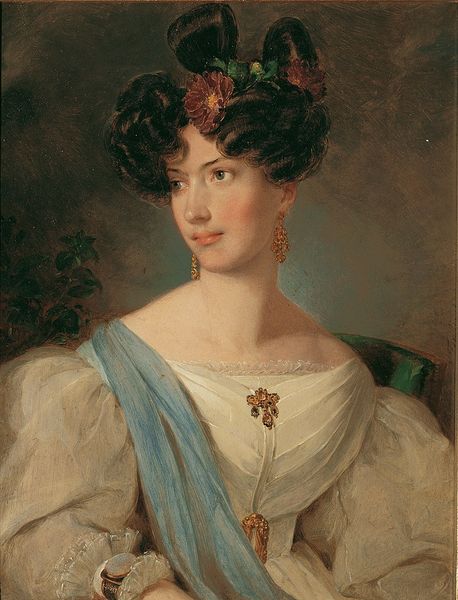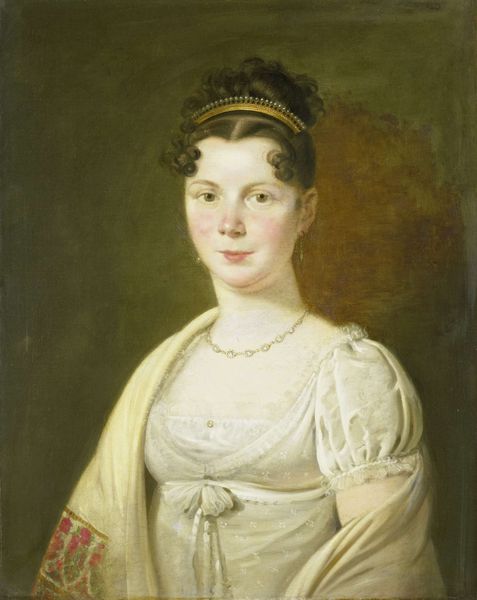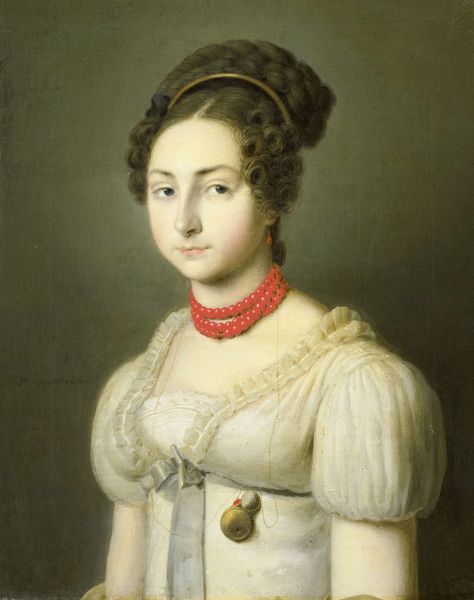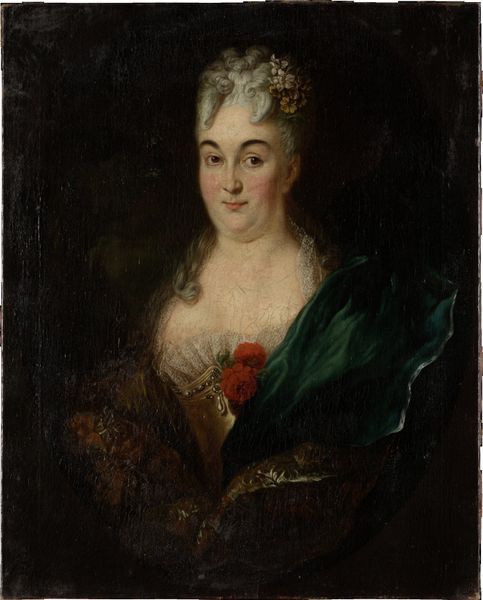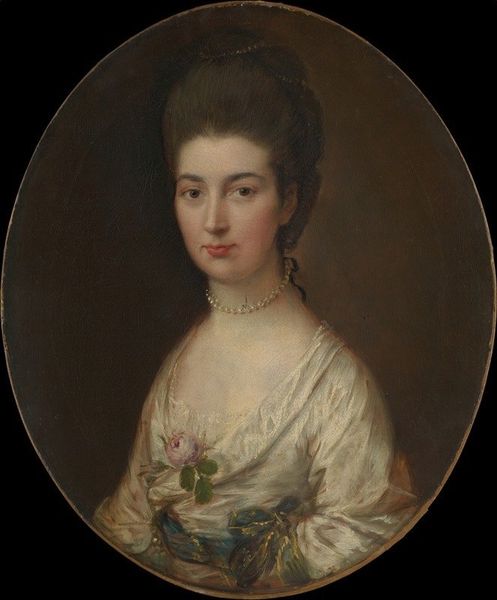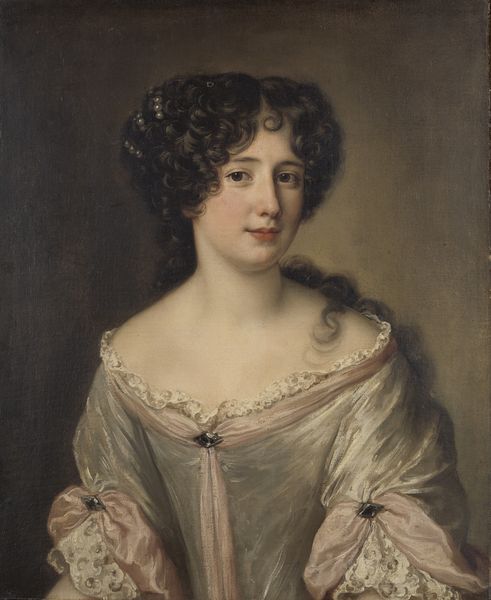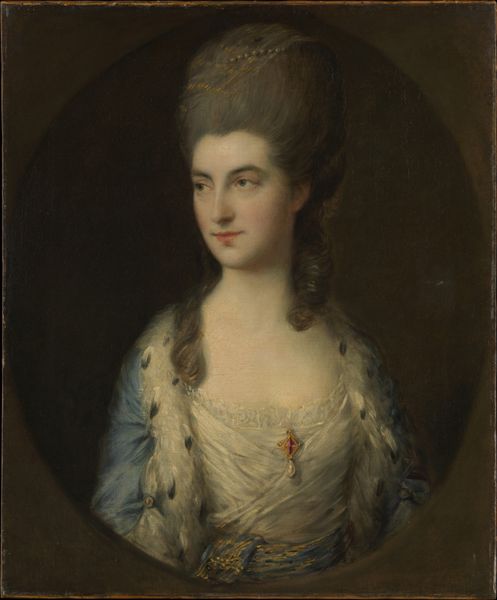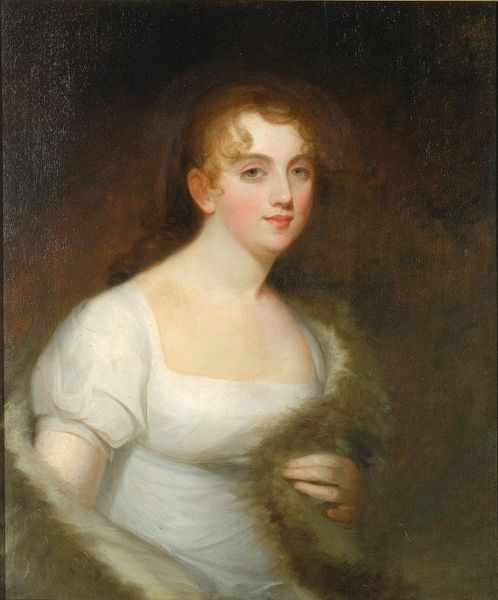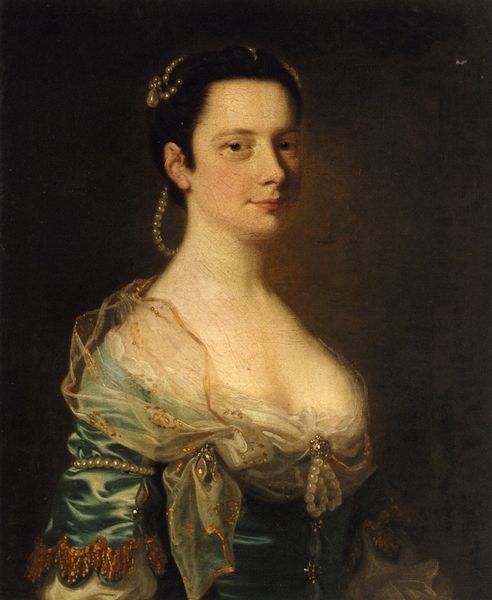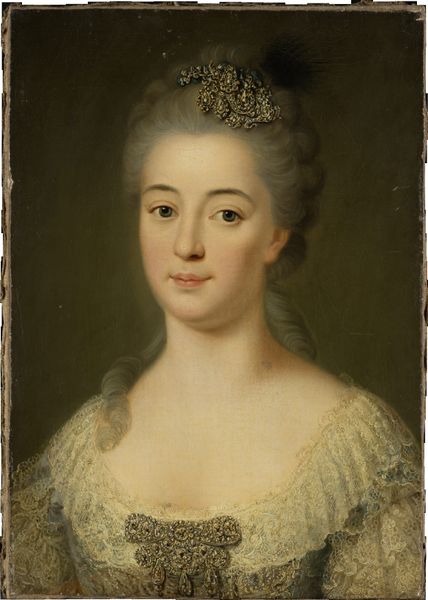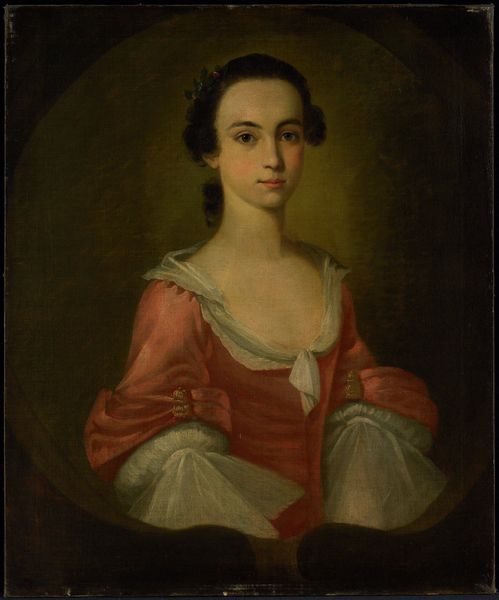
painting, oil-paint, oil-on-canvas
#
portrait
#
painting
#
oil-paint
#
genre-painting
#
oil-on-canvas
#
portrait art
#
rococo
Dimensions: 57.8 × 44 cm (22 3/4 × 38 1/2 in.)
Copyright: Public Domain
Curator: Alessandro Longhi, a Venetian painter active during the 18th century, rendered this captivating "Portrait of a Young Woman" around 1760, now residing at The Art Institute of Chicago. Editor: There’s an immediate fragility about the work; a muted palette gives it a delicate almost melancholy quality. I’m drawn to the subtle shift in tonality across the canvas. Curator: It's typical of the Rococo style, where pastel shades and ornate details convey elegance and grace; those floral elements for instance aren't simply decorative but signify fertility and beauty. Editor: The placement of those blooms – centrally positioned, contrasted against the muted gown - strikes me as the structural linchpin. Notice how the loose brushwork directs our focus entirely on her face as the most important area of the portrait, too. Curator: It reflects the societal expectations of women during that period, often represented as idealized figures emphasizing beauty and charm rather than strength or intelligence, while a face looking directly at the viewer represents that this woman knows exactly how and why she has been painted. Editor: That's an interesting observation; her expression, while seemingly gentle, does hold a certain composure, yes. Though I find it difficult to ignore the visible canvas texture. Its materiality actively reminds us we're viewing an artifice, a constructed representation, that has acquired history and character by itself. Curator: Precisely, and that aging contributes another layer of symbolism now, reminding us about our own ephemerality. The woman depicted becomes even more fascinating as she reflects on both personal beauty and timeless change. Editor: Reflecting on its structure, I'm appreciating now how that initial muted tonality lends the work such poignant enduring appeal. Curator: Absolutely, and by analyzing this Rococo artwork’s iconography and historical background we deepen our comprehension of social and symbolic currents throughout history.
Comments
No comments
Be the first to comment and join the conversation on the ultimate creative platform.
